Sitting in front of a computer for long hours can wreak chaos on the body. The deadly combination of job stress and the physical requirements of continuous computer use are painfully damaging. Basically, sitting with bad posture too long, under stress, paves way to life-hampering health and mental issues. Regular practice of this yoga for computer users sequence could prevent and manage repetitive strain injury.
This sequence comprises certain postures, breathing technique, and a simple yoga mudra, the amalgamation of which could be beneficial in various ways.
Benefits of Yoga for Computer Users
Yoga is an exercise form that bridges the gap between our physical, mental, and spiritual lives by easing chronic and acute pains from all realms. In addition, it also improves circulation, eases stiffness, alleviates inflammation, promotes digestion, lowers stress, relieves eye fatigues, eases headaches, and promotes overall well-being.
30 minutes of yoga each day three to four times week is sufficient to simplify the lives of computer users. The various postures open up your hips and shoulders, releases you wrists and massages your back. The breathing technique helps in releasing the stress while the mudra promotes overall wellness.
A SIMPLE DESKTOP ROUTINE
-
Tadasana – Mountain Pose
It is a simple, whole body stretch that you can practice anytime to dispel lethargy, energize your body and mind, and ease stiffness.
Stand straight with your feet together, arms resting along your body. Inhale and swing your arms over your head, joining your palms. Stretch your body head, gazing at your fingertips while pressing your feet firmly into the floor beneath you. Once you balance yourself, come on your toe tips to enhance the stretching experience. Breathe deeply, in and out through your nostrils, for added relaxation.
-
Uttanasana – Standing Forward Fold
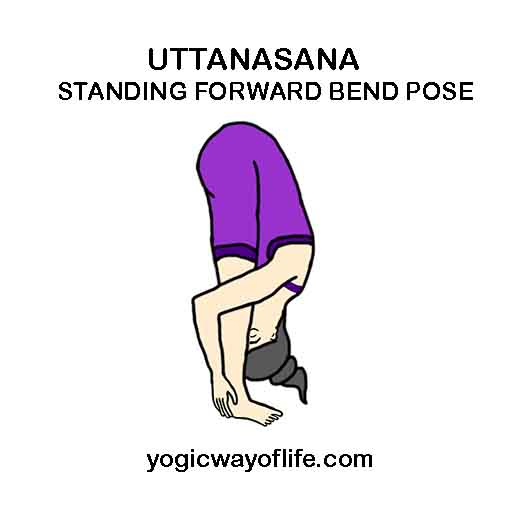
It is the simplest among the forward bends that is well-known for its immediate relaxing benefits. The posture also eases upset tummies and relieves headaches. It also stretches your joints and hamstrings.
Inhale and swing over your head. As you exhale, fold forward from your hips, pushing them backward and resting your abdomen on the thighs. Rest your palms on either sides of your feet or place them wherever they reach at the given moment. Let your head hang freely and close to your shin. Hold the posture, without rounding your back, indulging in deep breaths. You can keep your knees slightly bent, if you feel that you are overextending your hamstrings.
-
Prasarita Padottanasana – Wide Legged Standing Forward Bend
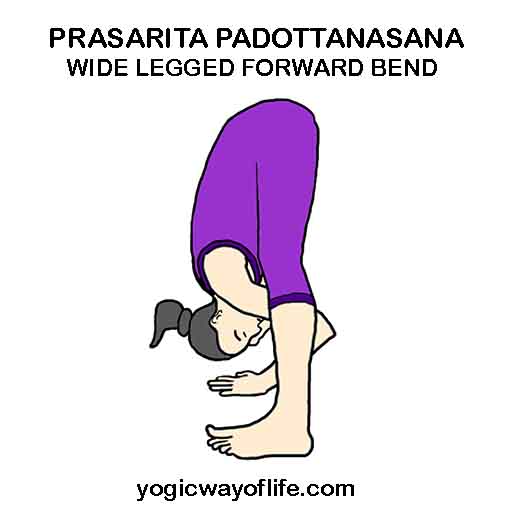
This posture gifts the same benefits as the previous posture. In addition, it also opens up the hip and groin area, releasing the strain from your lower back. This variation of the posture opens up your shoulders and eases the nagging neck.
Stand with your feet separated wider than your hips. Join your palms behind you and interlace your fingers. Inhale and take a backbend. As you exhale, fold forward, pushing your hips backward, bringing your head in between your feet. Simultaneously, lift your hands over your head so that your palms face the floor. Inhale, lift your head and chest up and bring your torso parallel to the floor. Exhale and deepen the forward bend, gazing at the floor. Hold the posture, breathing deeply, for 60 seconds.
-
Utkata Konasana – Goddess Pose – Wide- Legged Squat
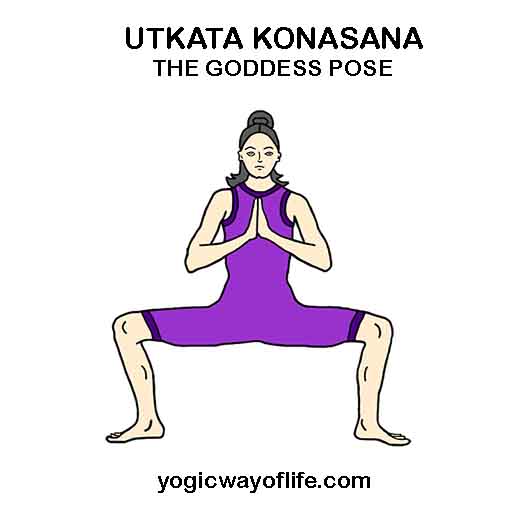
Hips and groin are regions where body stores most of its tension. Practicing this squat could help in improving circulation to that area, correct postural issues, ease back pain, and help you stay grounded when under stress. Lifting your arms at shoulder level helps to open the chest and shoulder area.
Stand with feet separated slightly wider than your hips, feet angled away from your body. Inhale and lift your arms at shoulder level, fingertips pointing to the ceiling and palms facing forward. Engaging the core muscles and aligning your spine, take a short inhalation. As you exhale, squat until your thighs come parallel to the floor. Gaze forward, squeeze your glutes, engage your thighs, and hold the posture for 60 seconds. If your hands become tired, rest them on your waist.
-
Malasana – Garland Pose
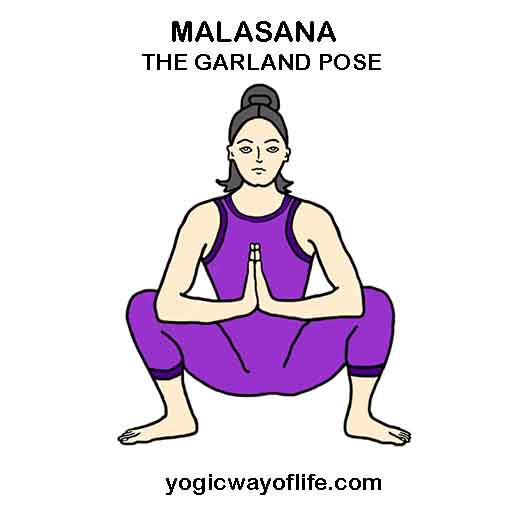
Squatting has countless benefits. It helps you to ground, opens up hip and groin, strengthens your knees, eliminates stress from your abdominal area, and improves digestive health.
Stand with feet separated slightly wider than your hips, feet angled away from your body. Inhale and as you exhale, squat completely. Keeping your spine straight, join your palms at heart center, pushing your knees out with your elbows. Angle forward slightly to open up your chest and hip. Hold the posture for 60 seconds.
-
Baddha Konasana – Butterfly Pose
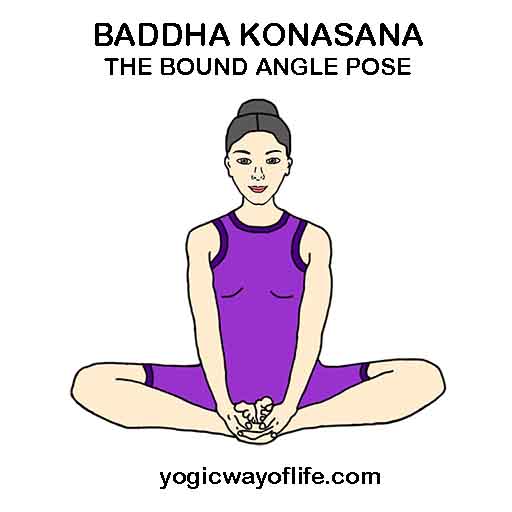
It is a good hip and groin opener and helps to correct your posture. It also helps to relieves stress and tension. It also improves joint mobility.
Sit down on the floor, legs extended out. Bend your knees outward so that soles of the feet are in contact. Rest the palms on the knees and elongate your spine. Inhale and as you exhale, bend forward, elongating your spine and pressing your knees down and close to the floor. Hold the posture wherever you feel comfortable.
-
Parivrtta Sukhasana – Simple Seated Twist
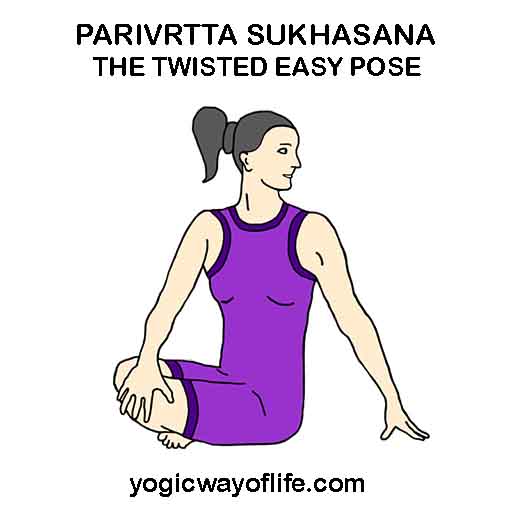
It is a simple spinal-cum-abdominal twist that works towards detoxifying your spine and abdominal area. It also promotes digestion and eases stress. You can practice this posture by sitting in Vajrasana or Padamasana.
Sit down on the floor in simple cross-legged posture, keeping your spine erect. Inhale and place your left palm on your right knee and right palm behind you on the floor. Exhale and twist to your right and look over your right shoulder. Hold the twist for 30 seconds. Inhale and come back to the center. Repeat on the opposite side.
-
Gomukhasana Hands
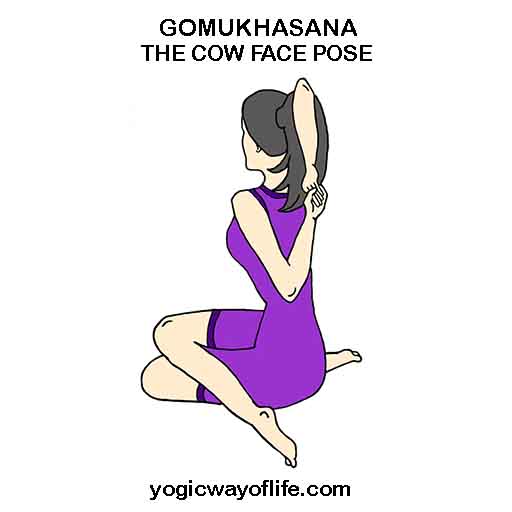
The entire Gomukhasana or Cow Face is a hip and shoulder opener. You can either choose to do the entire posture or opt for only the hand version mentioned here. This posture also helps to release tension from the wrist, thereby averting Carpel Tunnel Syndrome.
Sit down on the floor in simple cross-legged posture, keeping your spine erect. Inhale and rest your left hand behind you, left fingertips facing up. Exhale and bring your right hand over your shoulder and clasp the fingers with that of the left hand. Pull the right hand with your left hand to open up the chest and shoulder area. Gaze forward and hold the posture for 30 seconds. Inhale, exhale, and release the posture. Repeat on the other side.
-
Anulom Vilom Pranayama – Alternate Nostril Breathing
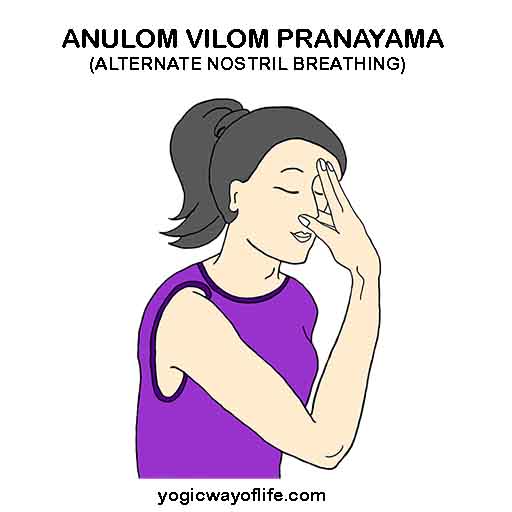
It is one of the most effective stress-busting breathing techniques. The method is pretty simple. Inhale through one nostril and exhale through the other, but in order to reap the benefits, you have to maintain the ratio of 1:2 between inhalations and exhalations.
Sit in any comfortable seated posture, keeping your spine straight. You can use a folded blanket or a small cushion to keep your spine upright during the entire practice. Rest your left palm on the left knee, joining the tips of your thumb and index fingers. Lift your right palm. Close your right nostril using the right thumb. Rest the index and middle fingers of your right palm in the space between your eyebrows. Use your right ring finger to close your left nostril while pinky finger points to the ceiling.
Close your eyes and take 5 deep breaths to prepare your body and mind for the practice. Exhale completely through your left nostril, keeping the right nostril closed. Inhale for a count of 5 through your left nostril, close the nostril using your right ring finger. Open your right nostril and exhale for a count of 10. Inhale through your right nostril, keeping your left nostril closed, for a count of 5 and close it using the right thumb. Open your left nostril and exhale completely for a count of 10. This completes one round of Alternate Nostril Breathing.
Practice 15 to 20 rounds.
-
Prana Mudra
Prana, in Sanskrit means Life and mudra means gesture, which implies that Prana Mudra is the Mudra of Life or the gesture of Life. It is a simple hand gesture which you can practice anytime and anywhere of your choice. Just make sure that you do not anything one hour before or after practicing the Mudra.
It eases the strain experienced by eyes due to constant gazing at the computer screen while promoting your vital life force. It energizes you and helps to ease all you irritating aches, pains, and digestive disorders that arise from constant sitting in incorrect posture.
Sit down in a comfortable seated posture, keeping your spine erect and eyes closed. Rest both your palms, upside down on your knees, and join the tips of thumb, ring and little fingers of respective hands. Let the other two fingers remain stretched out. Breathing deeply, practice the Mudra for 30 to 45 minutes daily.
Yoga, alone, cannot bring in significant difference. You need to take the initiative to make sure that you are not compromising on your health! Start practicing yoga and surrender yourself to the practice to help you achieve a good work-life balance!

Hello Dear Sir/Madam
Thanking you for sending this article. It is very informative and doable.
Thank you one again
Regards
Arun Kumar.R